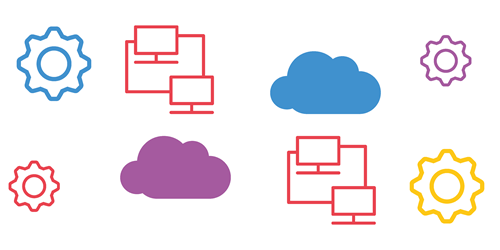74% of organisations who embark on a legacy modernisation project fail to complete it but if organisations are thorough in the strategy and planning stage of a legacy modernisation project, the chance of success is increased.
Today, companies must deliver a seamless, intuitive and engaging customer experience but a significant barrier to delivering these types of digital services is reliance on complex, legacy systems and technology. For organisations to stay relevant and maintain and improve their competitive edge, legacy modernisation as part of a overarching digital strategy is vital. While legacy modernisation comes with a wealth of benefits – reduced cost of ownership, quicker to market and enhanced security to name but a few – it can be extremely complex and requires a significant amount of effort, time, resource and investment to complete successfully.
According to research conducted by Coleman Parkes, 74% of organisations who embark on a legacy modernisation project fail to complete it. Many of these projects’ stall or fail completely and, more often than not, the reasons for doing so are internal factors, all within a company’s control. However, many of the common pitfalls can be avoided if you plan your strategy and approach properly.
Why Legacy Modernisation Projects Fail - the common pitfalls
1. Disconnected leadership teams
Collaboration is absolutely essential to successful legacy modernisation. Technical teams must ensure that senior leadership see the value and broader business impact of these efforts in terms they can understand. Without full commitment and buy-in from the C-Suite, these projects run the risk of complete failure.
2. Lack of understanding
Before embarking on a legacy modernisation project, it is imperative that you fully understand your objectives and the options available to as well as the risk-to-reward ratio associated with each.There are several different approaches (Gartner identifies 7 legacy modernisation options – encapsulate, re-host, re-platform, re-factor, re-architecture-build, replace) and understanding the optimum route for your organisation will depend on the challenges you are trying to overcome, your budget and timescales.
3. A restricted, non-inclusive discovery phase
The planning phase for a modernisation project requires input from multiple stakeholders in the organisation such as technical architects, business analysts, business owners and security experts. Receiving sufficient input concerning the legacy systems in question is sometimes the biggest challenge. Every effort needs to be made to understand these systems’ design and dependencies, even if the people who have written the applications and logic are no longer in the business.
4. Inflexible architecture
Organisations need a flexible architecture that can adapt to a fast-changing business environment so they can offer competitive, relevant services and remain attractive to their customer base. A flexible architecture means the design can accommodate a variety of different workflows. It is worthwhile to invest the time to map out how processes, technology integrations, and onboarding are working today and how they might evolve in the future.
If you are thorough in the strategy and planning stage of your project and you secure the buy in from relevant business leaders, you minimise the risks associated with your legacy modernisation project and increase your chance of success. Once you have the buy in and a well thought out strategy in place, it is imperative that you keep reviewing that strategy, taking both external and internal factors into account, and evolve your approach as and when required. By doing this, you give yourself the best chance of success and will be able to reap the benefits a robust, secure and scalable cloud first model brings.
Exception’s team of specialists are experienced in legacy modernisation programmes in enterprise organisations. If you are looking to modernise your legacy systems and data and need support, get in touch and our experts can advise.
Back to all insights
